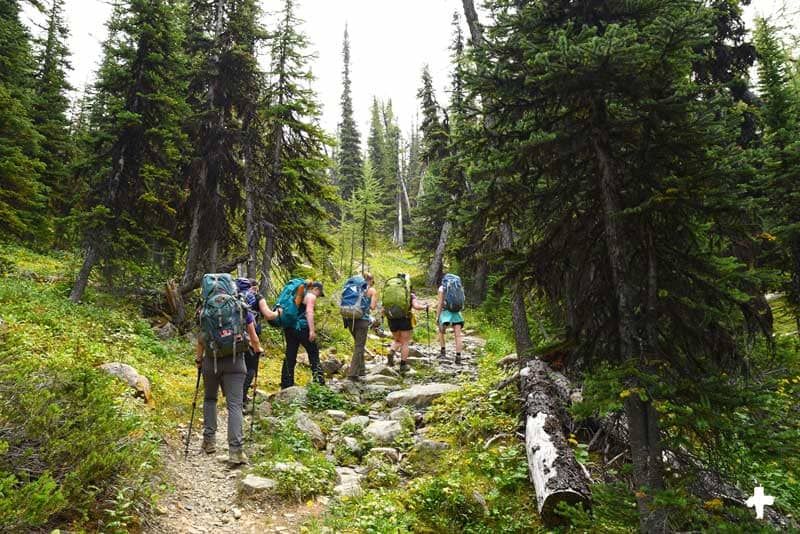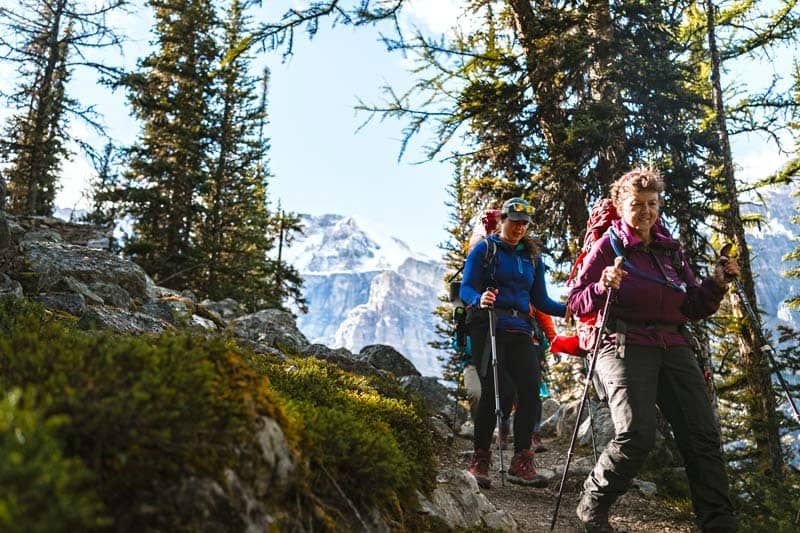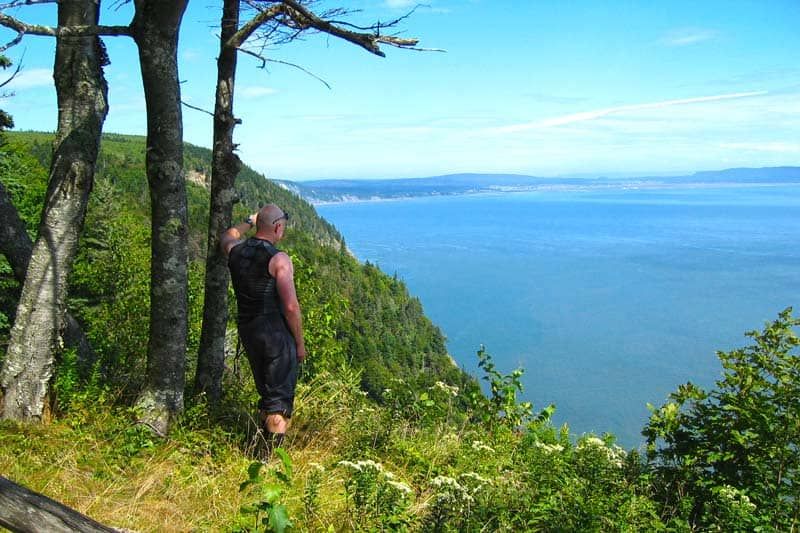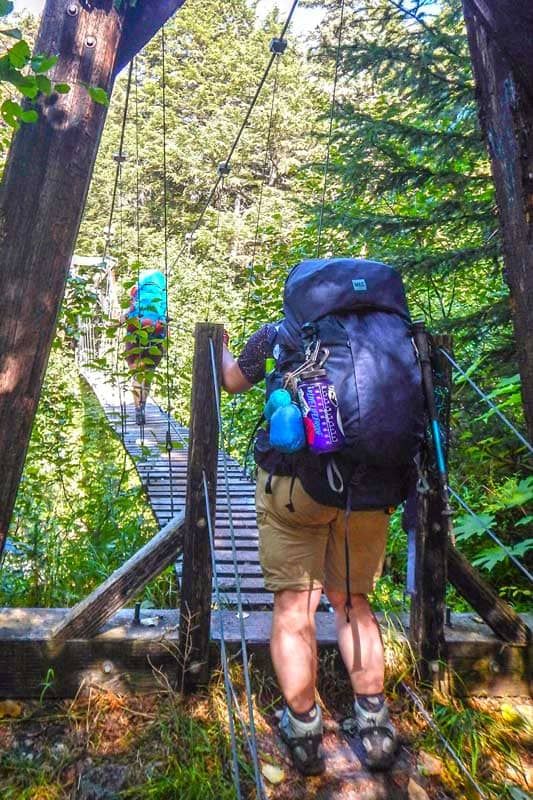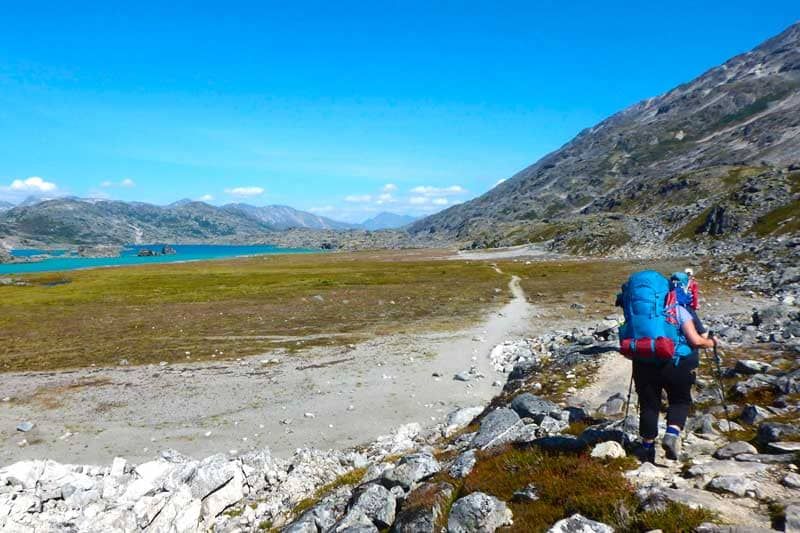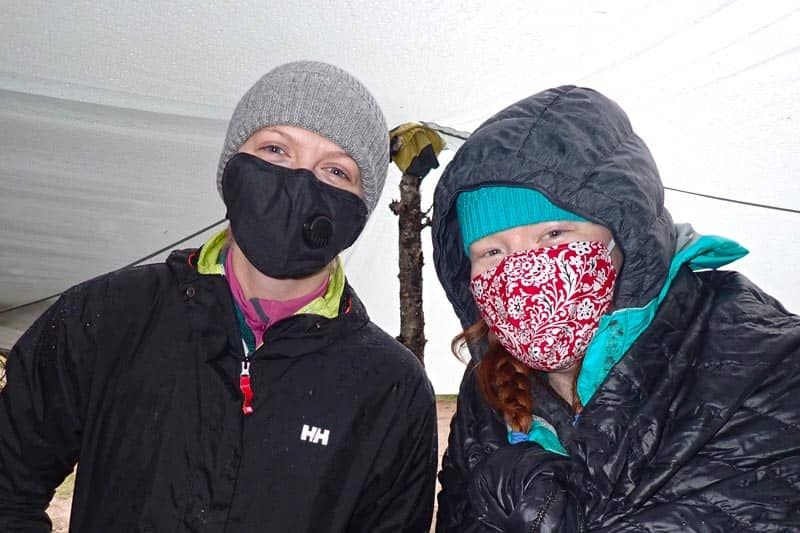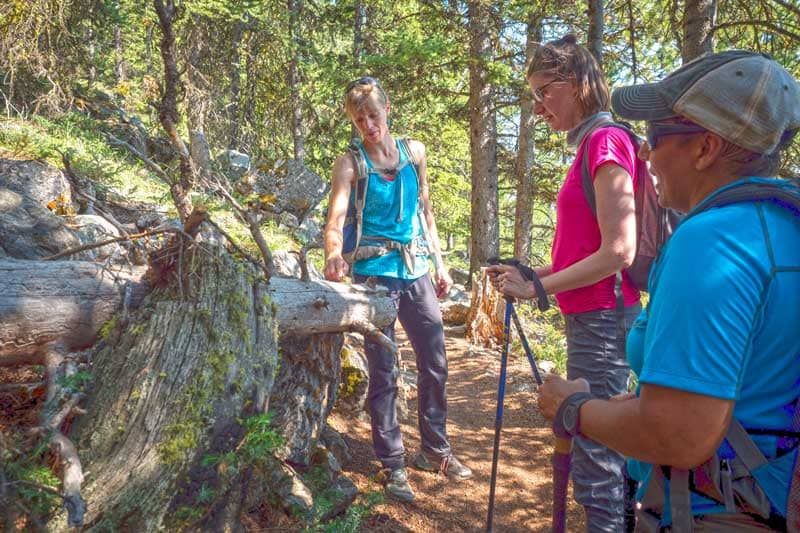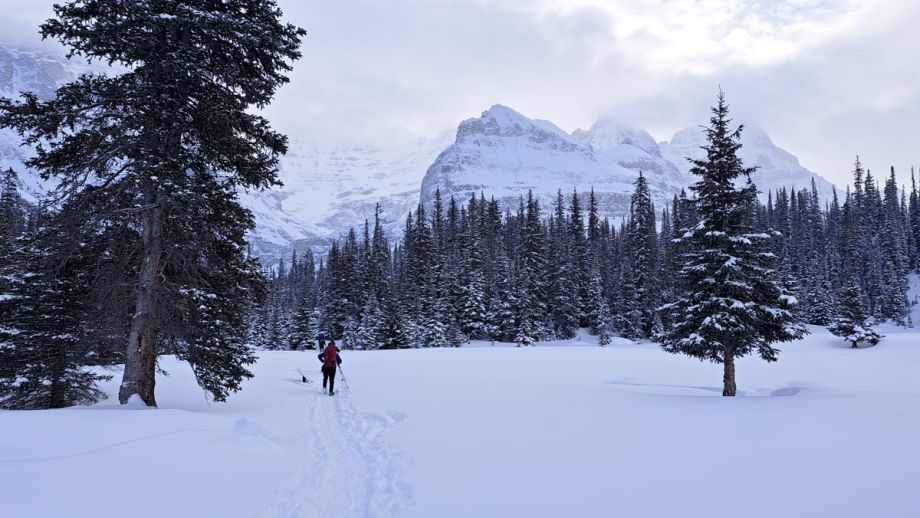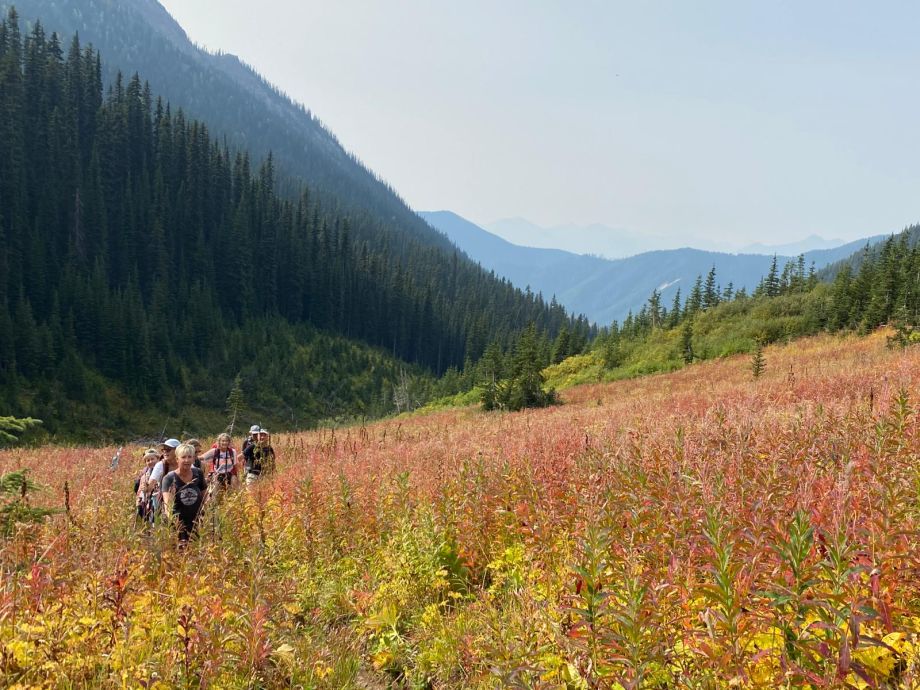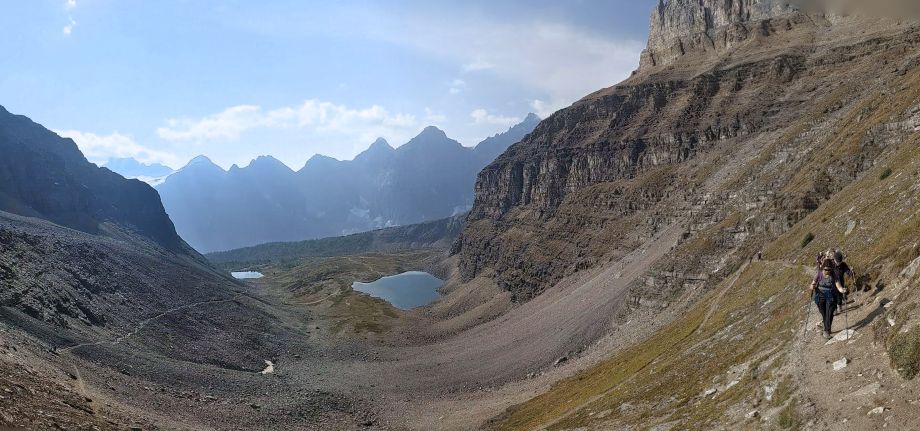Hiking Injuries: How to prevent them
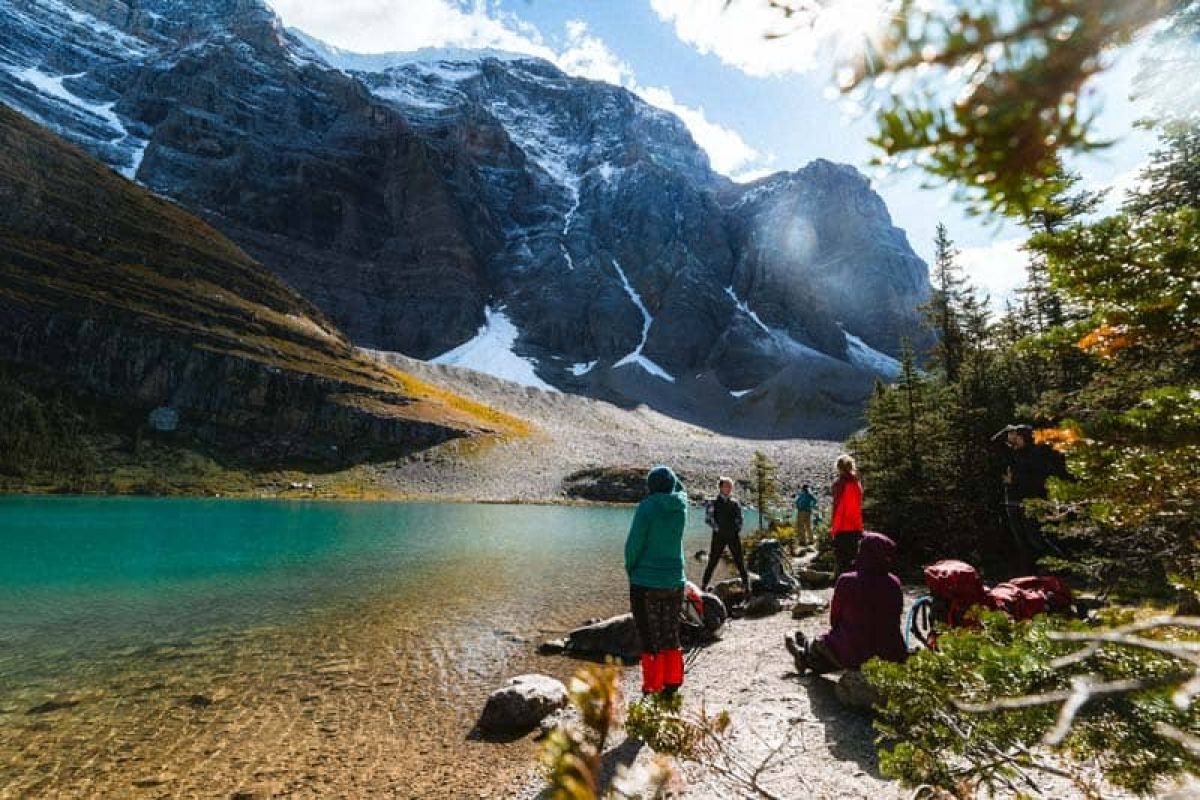
Hiking outdoors has many perks! Nice views, fresh air, and the sounds and smells of nature! Hiking is a powerful workout that can improve your physical and mental wellbeing. To get the best out of results we put together tips on how to prevent 5 of the most common injuries in the backcountry
Many of these injuries are preventable by increasing your distance and elevation gain in stages. A good rule of thumb is avoid increasing your distance and elevation gain at the same time. For example. Week 1 hike 6km and 200m elevation gain. Week 2 aim for a 7-8km hike with the same elevation gain, 200m. Week 3 look for a hike that keeps the distance around 7-8km with more, 250-300m, elevation gain. Keep alternating between elevation and distance until you’ve achieved the desired level of difficulty.
Progressing to longer hikes too soon can lead to many of the injuries below. Here are some ways to prevent and treat these issues.
1. Achilles Tendon Strain
The main cause is from increasing the load on your body too soon. This can occur by either increasing distance, elevation, or backpack weight. Other common causes are having shoes that rub against the tendon or if your ankle has decreased mobility. The main mobility you want to look at is your ability to bring the top of your foot back towards your shin.
Prevention and Treatment
- Improve plantarflexor strength - think pressing on a gas pedal. Improve this by performing heel raises – lift yourself up onto the ball of your foot and lower back to the starting position
- Eccentric exercises – This is a progressing from the tip above. Instead of lifting up on both feet, lift yourself up on your strong side and lower SLOWLY on your injured side.
- Calf stretching – find a detailed stretching program here
- If you’re out on the trail and you need a short-term solution, add a slight lift in the heel of your shoe. Folded toilet paper will work in a pinch.
- Finally, the best prevention is to start with shorter hikes and build up to longer distances over time.
2. Plantar Fasciitis
Like achilles tendon strains, the cause of plantar fasciitis is due to to progressing one's activity too soon. Other common causes are having a tight calf, weak feet, and improper footwear.
Prevention and Treatment
- The best prevention advice I can give is to decrease the load while hiking. Carry less weight and hike shorter distances with less elevation. If you’re out on the trail and you need a quick fix get someone else to carry your stuff
- Other trail choices that will help you out are avoiding hiking up hill. Find a flat trail
- Strengthening your feet will also help
- Towel scrunch – place a tea towel on the ground. Use your toes to pull it towards yourself
- Lift up little toes while keeping big toe relaxed on the ground
- Lift up big toe while keeping little toes relaxed on the ground
- When you get home from your hike roll the bottom of your foot with frozen water bottle
3. Twisted or sprained ankle
If you haven’t rolled your ankle before you are a unicorn. Well done! For the rest of us, rolled ankles are most often caused by decreased balance and body awareness.
Prevention and Treatment
- The best advice: Brush your teeth while standing on one foot. Yup! That simple. Time spent standing on one foot will improve your body’s awareness of where it is in space and strengthen all the little ankle muscles. By incorporating it into your daily life you’ll be more likely to complete the exercise.
- When discomfort levels allow, use an exercise band to strengthen your ankle. Keep your shin still, move your foot inwards against the band, and control your ankle back to the starting position. Repeat in the opposite direction, pushing against the band as you move your foot outwards.
- If you roll your ankle in the field elevate, placing a tensor bandage on it, and getting someone else to carry your pack.
4. Low Back Pain
Decreased mobility and a poor fitting backpack are some of the biggest causes of low back pain when hiking
Prevention and Treatment
- Spend time before you hit the trail warming up. I recommend a dynamic warmup
- Preform a full body stretching program after each hike. If you have troubles committing aim for once a week.
- Spend the time finding a backpack that fits you well. It should match your torso length and place the majority of the weight on your hips, not your shoulders. When at the store load the backpack with weight and keep it on for a couple minutes as you wonder through the store.
- When you pack your bag keep the heavy items close to the small of your back. This will keep the bulk of the weight close to the center of your gravity and decrease the forces on your back
5. Shoulder and Neck Pain
Like low back pain, shoulder and neck pain is often caused by a poor fitting pack while hiking. If the pack is not fit properly it will pull down on your neck instead of placing the weight on your hips. For the moms out there, it's like carrying around a small child; you won't be able to do it all day!
Prevention and Treatment
- Spending the time finding the best pack is key. If the pack doesn’t fit well it will add unnecessary stress on your neck. A well fitted pack will place 90% of the weight on your hips and 10% on your shoulders.
- Use hiking poles. The poles will provide you with better balance and the arm movement will stimulate the circulation in your hands. The improved circulation will prevent swelling in your hands.
These are a sampling of the tips covered on our programs at Get Outside. I enjoy being able to combine my physiotherapy knowledge with my guiding expertise.
If you'd like to learn more, get your body ready for the summer, and learn more injury prevention, join me! Our Fitness Hiking Series is a 5-week series where we increase the difficulty of each hike to get you ready for a summer of fun. We also teach you warm up and stretching techniques that will keep you hiking for a lifetime!
Fresh off the Press
Most Popular Stories
Tags
Spread the Love - Share this article on your socials...
